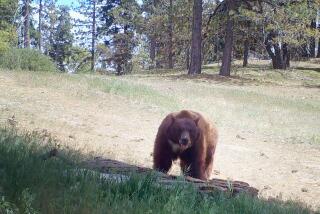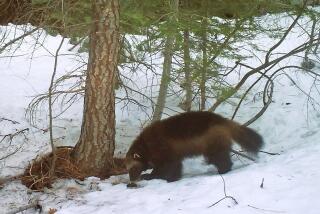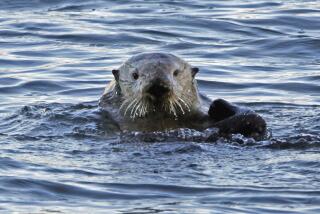Some of Alaska’s wood bison herd to be released back into the wild
If you’re heading to Alaska, you can get a good look at scores of wood bison, North America’s largest land mammal, in captivity. But maybe not for long.
Many of the large creatures will be released back into the wild.
The Alaska Wildlife Conservation Center south of Anchorage is home to a herd of bison relocated from western Canada in 2003. Its numbers have grown from 65 to nearly 150.
In mid- to late March, wildlife experts will begin resettling about 100 of the bison onto the land where they once thrived.
For 10,000 years, Athabascan natives hunted wood bison for clothing, food and shelter. But by the early 1800s, the mammoth mammals -- bulls can weigh as much as 2,000 pounds -- had disappeared from Alaska.
The wood bison, a larger cousin to the American Plains bison, will be moved in specially designed containers, first by truck and then by plane, to Shageluk, an isolated Native village about 300 miles west of Anchorage.
“That ecosystem has been lacking a grazer,” said Cathie Harms, a wildlife biologist with the Alaska Department of Fish and Game. “That piece has been missing for a couple hundred years and we need to put it back.”
A few dozen will remain behind, roaming the conservation center’s hundreds of acres of land outside Girdwood, a 45-minute drive from Anchorage.
“Following reintroduction [into the wild], they will be viewable, but [not] in the numbers that you’d be able to see now,” said Scott Michaelis, the center’s marketing director.
The bison, along with bears, moose and musk oxen, can be viewed on walking and driving tours through the center. Black and brown bears can be seen from a raised walkway above their habitat; the bison can be spotted from behind tall fences along a roadway.
The wood bison, once nearly extinct, remains on the U.S. government’s list of threatened species.
“Hopefully, at some point in the future, we can get them off the list altogether,” Harms said.
Info: Winter hours at the Alaska Wildlife Conservation Center (Mile 79, Seward Highway, Girdwood, Alaska) are 10 a.m. to 6 p.m. Beginning May 9, the hours are 8 a.m. to 8 p.m. Admission is $12.50 for adults and $9 for children ages 4 to 12.
Follow us on Twitter at @latimestravel
More to Read
Sign up for The Wild
We’ll help you find the best places to hike, bike and run, as well as the perfect silent spots for meditation and yoga.
You may occasionally receive promotional content from the Los Angeles Times.






